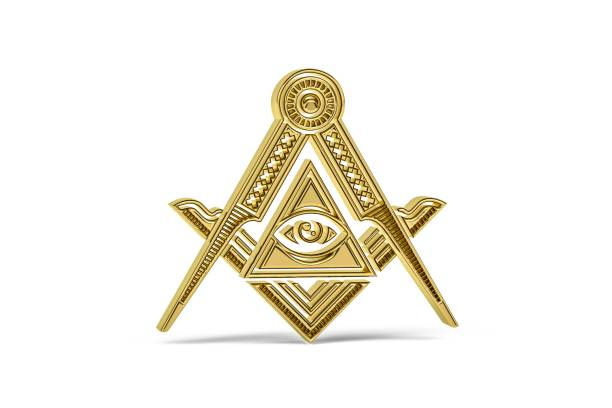Unveiling the Intriguing World of Masonic Symbols: A Guide for New Members
- How to join Freemason
- Nov 8, 2024
- 4 min read
Updated: Apr 16

Freemasonry is a unique fraternity with a rich history and a complex system of symbols that embody its teachings and values. For new members, understanding these symbols is essential. It not only enhances appreciation of Masonic traditions but also enriches the overall journey through this ancient brotherhood. In this guide, we will explore the meanings behind some of the most prominent Masonic symbols, providing insights that will enhance your experience.
The Square and Compasses | Unveiling the Intriguing World of Masonic Symbols: A Guide for New Members
One of the most recognizable symbols of Freemasonry is the Square and Compasses. This emblem includes a square, representing morality, and compasses, symbolizing boundaries.
The square serves as a powerful reminder for Masons to act justly and ethically. For example, when making decisions in both personal and professional settings, the square encourages Masons to weigh their choices against their principles. The compasses highlight the significance of self-discipline. By keeping personal and moral boundaries, Masons can lead a balanced life. Together, these tools inspire members to align their behaviors with Masonic ideals, fostering a community grounded in ethics. Unveiling the Intriguing World of Masonic Symbols: A Guide for New Members
The Letter 'G'
In the center of the Square and Compasses often lies the letter 'G'. This letter is commonly understood as representing God and Geometry.
For Masons, the divine is central to their beliefs. The presence of the letter 'G' serves as a constant reminder of the Great Architect of the Universe, which symbolizes a higher power guiding their actions. Geometry symbolizes the mathematical principles that underpin the universe. For instance, the importance of angles and measurements in construction reflects the Masonic belief in order and structure. This connection emphasizes the harmony between faith and knowledge, key themes in Freemasonry.
The All-Seeing Eye
Another important symbol within Masonic tradition is the All-Seeing Eye. Depicted within a triangle, this eye represents God's omniscience and serves as a reminder that one's actions are always observed, even when no one else is watching.
For new members, this symbol emphasizes mindfulness. According to a survey, 87% of Masons believe that this symbol encourages ethical behavior in their daily lives. By adhering to high standards and reflecting on their choices, Masons can cultivate integrity and pursue truth throughout their journey.
The Pillars of Solomon
The Pillars of Solomon symbolize strength and wisdom, referencing their origins from the entrance of King Solomon's Temple.
In Masonic teachings, these pillars represent the foundational strengths of a Mason—the quest for knowledge and the need for a solid moral foundation. They remind members to actively seek enlightenment and wisdom. For example, many Freemasons participate in community service projects, not only to help others but also to gain knowledge and understanding through real-world experiences. This commitment to growth is central to Masonic philosophy.
The Staircase
The Symbolic Staircase, depicted with three steps—Entered Apprentice, Fellow Craft, and Master Mason—illustrates different stages in a Mason's journey, representing personal growth.
Each step is a metaphor for progress and the pursuit of knowledge. For new members, ascending these steps symbolizes a commitment to continuous self-improvement. Statistics show that individuals who engage in lifelong learning experience increased job satisfaction and personal fulfillment. Thus, as new Masons strive for higher virtues, they can expect rewards that extend beyond the Masonic lodge.
The Masonic Trowel
The Masonic Trowel symbolizes the spreading of brotherly love and affection among Masons.
This tool reminds members to spread goodwill and kindness. Just as a trowel is used to spread cement, Masons should work to maintain unity and cooperation. When new members learn about this symbol, they are encouraged to actively participate in lodge activities and outreach programs, fostering bonds of fellowship that are essential to Masonic teachings.
The Apron
The Masonic Apron is one of the most significant symbols within the fraternity. Typically made of white lambskin, the apron signifies purity and innocence—hallmarks of a Mason's moral commitment.
For new members, wearing the apron serves as a badge of honor. It denotes dedication to the principles of the fraternity and signifies hard work toward knowledge and virtue. Practical examples include participating in workshops or public speaking events, which help develop personal character and reflect positively on the Masonic community.
The Broken Column
The Broken Column serves as a powerful reminder of the trials and tribulations of life, showing that the journey includes both struggles and successes.
This symbol teaches Masons the importance of resilience. New members are encouraged to learn from their challenges, reinforcing the belief that adversity can lead to personal growth. For example, many successful individuals credit their failures as crucial learning experiences that shaped their future achievements. Integrating this perspective can help Masons face life's challenges with strength and resolve.
Reflecting on Masonic Symbols
Understanding Masonic symbols can greatly enhance the experience of new members. Each symbol carries profound meanings and lessons that guide Masons as they embark on their journeys of self-discovery and moral growth.
By investing time to learn and reflect upon these symbols, new members can deepen their understanding of the fraternity's rituals and values. As they embrace these teachings in their daily lives, they enrich not only their own experiences but also the collective spirit of Freemasonry.
As you explore the fascinating world of Masonic symbols, remember that each represents a vital step on your path toward enlightenment, brotherhood, and self-improvement. Embrace this learning process and allow the principles of Freemasonry to guide you in your actions and interactions.



Comments